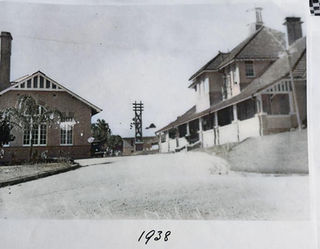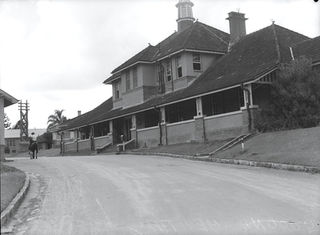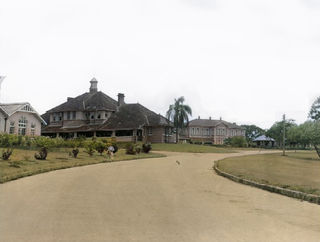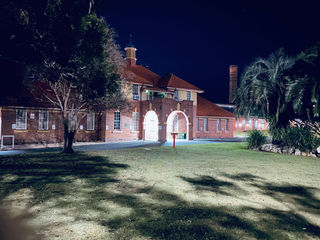

There Was Once an Asylum



This site not only provides an overview of mental health history and its implications for Goodna, but also explores the complex relationship between memory and history
There are stories we may never know, but this site uncovers the history, revealing the layers of understanding that form the foundation of the present.
It is done in a way that honours the patients, clients, and the people.
The Administration Building
Built-in 1917
The Administration Building stands at the centre of the Central Administration Area.
A purpose-built medical office building of the hospital with a small residence on the first floor, as of 2020, it is used as administration offices and is highly intact. It faces east onto the turnaround driveway off Ellerton Drive. A considerable collection of hospital complex-related paraphernalia is housed in cabinets in the medical superintendent’s office on the ground floor.
Features of the Administration Building of state-level cultural heritage significance also include:
-
Form, scale, and materials: low-set, symmetrical, narrow, two-storey brick building with a prominent hip roof clad with terracotta tiles, tall central ventilation fleche, and brick chimneys; face brick walls with roughcast render above sill height and concrete dressings; front porte-cochere with first-floor open balcony at the main entrance, adjacent to the driveway; rear (west) ground floor verandah with concrete floor, brick and timber piers, and VJ-lined ceiling; small curved porches at either end of the building forming secondary entrances; ventilated battened eaves; metal water goods including decorative rain heads; roof-mounted air siren; timber floors, plaster masonry partitions, sheet-and-batten-lined ceilings
-
Layout: Wide central stair hall running from front to back in a series of vestibules, including a ‘hall porter’s vestibule’, intersecting with a transverse central hall accessing offices on either side; ground floor includes a former surgery theatre, clerk's office with saferoom, and dispensary; first floor includes the former two-bedroom residence
-
Joinery: Multi-paned doors, fanlights, and windows; moulded architraves, skirting boards, picture rails, and cornices; clear-finished hall porter’s office, wall panels, and main stair; wall-mounted WWI Honour Board (1916, originally hung in Hospital) and bench seat in entry vestibule; clear-finished display cabinets in former medical superintendent’s office and their hospital complex-related paraphernalia
-
Original brass door and window hardware
-
Saferoom and its heavy safe door and metal window shutters
-
Cement-rendered garden stairs at the south end of the building
























